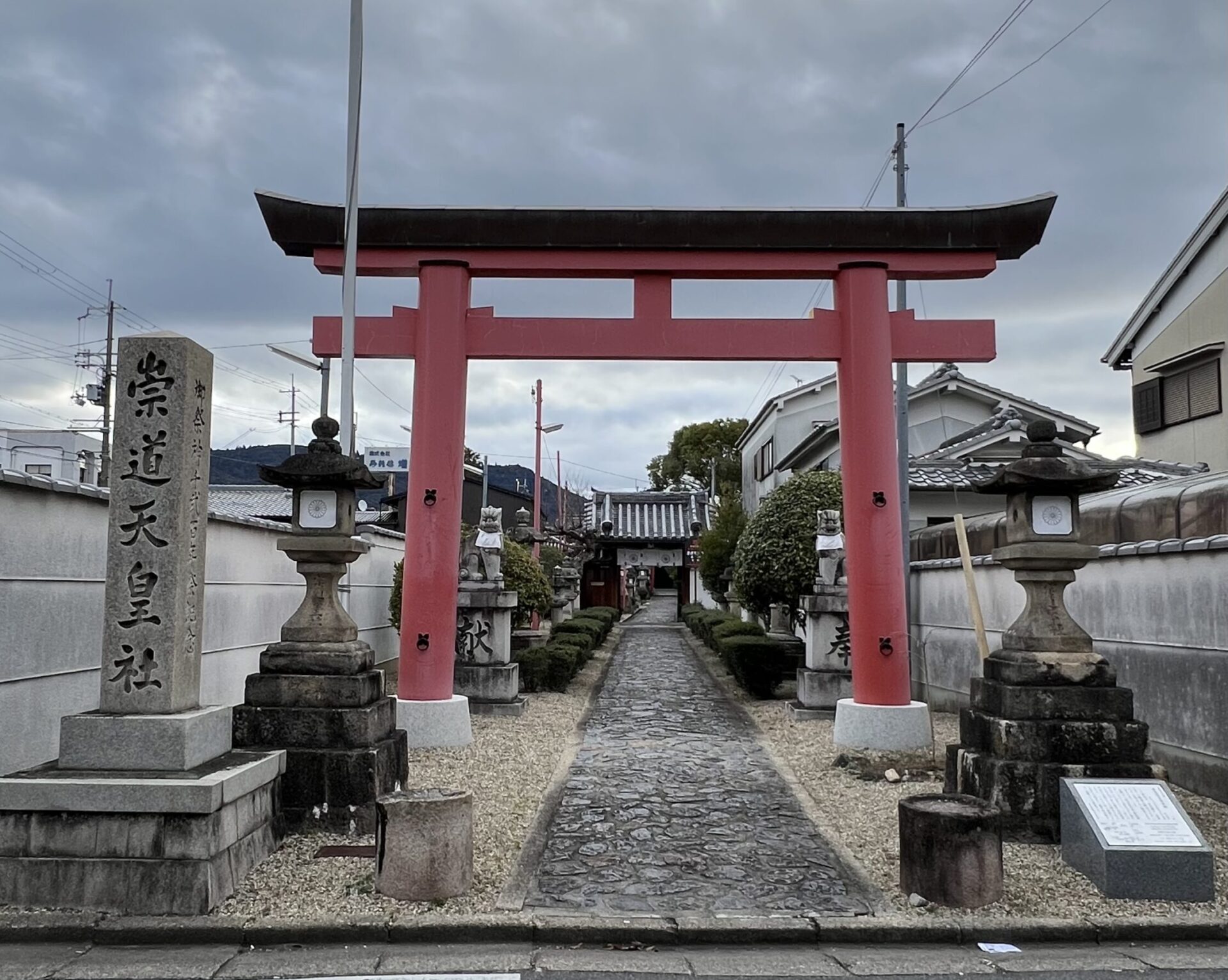再び怨霊である。
祟道天皇社に祀られている早良親王(750?~785)という人をご存知だろうか。奈良時代後期(8世紀後半)を生きた早良親王は平安京遷都で知られる桓武天皇の実弟で皇太子でもあった。祟道天皇という名は彼が死んだ後に与えられたもので、早良親王は祟り神としてこの神社に祀られている。つまり、のちの世の人たちが早良親王は無実の罪によって殺されたと考えてその霊を祀るためにこの神社を立てたということだ。
私はなぜかこの早良天皇にとても惹かれる。彼は桓武天皇の側近の殺害に関与したという誣告(ぶこく)によって兄である桓武にも裏切られ、死に至らしめられるのだが、彼の人生を知るにつけその無念に思いを馳せるのである。
私が初めてこの崇道天皇社を訪れたのは2月の寒い日で、空もどんよりとしていた。立派な神社で、朝早くから散歩がてらにお詣りにいらしている方も何人もお見かけした。近隣の方から大切にされている神社のようだ。
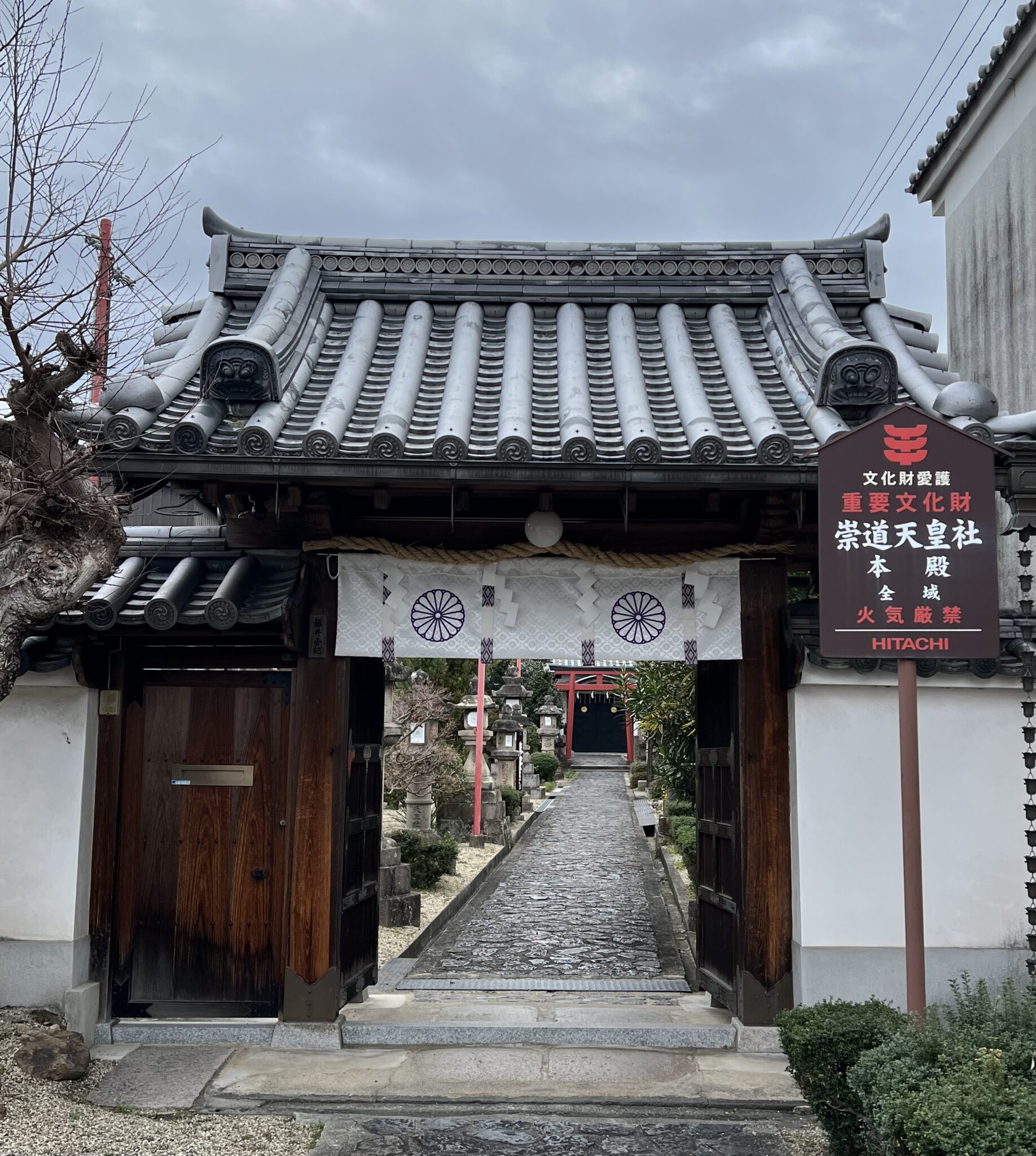
歴史
早良親王は光仁天皇(白壁王)の息子で、いずれ桓武天皇となる山部王の弟なのだが、父である光仁天皇は天武直系の天皇の跡継ぎが途絶えたことで全くの棚ぼたで天皇になった。それまでは自身が天皇になることなど想像もしていなかった白壁王は、早良親王が将来独立して生きていけるように彼を幼い頃から仏門に入れていた。早良親王は東大寺羂索院に住み込み、11歳で出家し、21歳で受戒、大安寺東院に移り将来を嘱望される高僧になっていく。ところが青天の霹靂で父親が天皇となり、さらにその後兄の山部王が即位した際に32歳で皇太子として還俗させられる。僧としての生き方を積み上げてきた早良親王にとってこの還俗はおそらく自分の意に反したもので、天皇である兄をサポートする、という一点において断腸の思いで還俗を受け入れたのだろうと想像する。真面目な早良親王はその後、僧としての経験を活かしながら兄桓武天皇を支えるが、藤原種継暗殺事件に関わったという罪状で淡路島に流され、その途上で亡くなっている。兄への無実の抗議として旅の途上で飲食を断ったことによる死、と考えられているが正確には分かっていない。
事件の背景としては二つ理由が考えられる。一つは奈良の大寺院をバックに実力をつけてきた皇太弟早良親王と、桓武の皇子で藤原の母を持つ安殿親王を跡継ぎに押す種継との間の対立。二つ目は種継が推進する長岡京遷都に関する意見の対立である。奈良の寺社と深く結びついていた早良親王にとって桓武天皇の突然の長岡京遷都は板挟みの苦渋を感じるものだったのではないだろうか。
父の光仁天皇が政争などに煩わされないようにと選んだ僧としての人生だったはずが、自分の意思に関係なく何度も政争に翻弄され、最後は無実の罪によってその命を奪われるという皮肉な結果になったことは後世の人々の涙を誘っただろう。
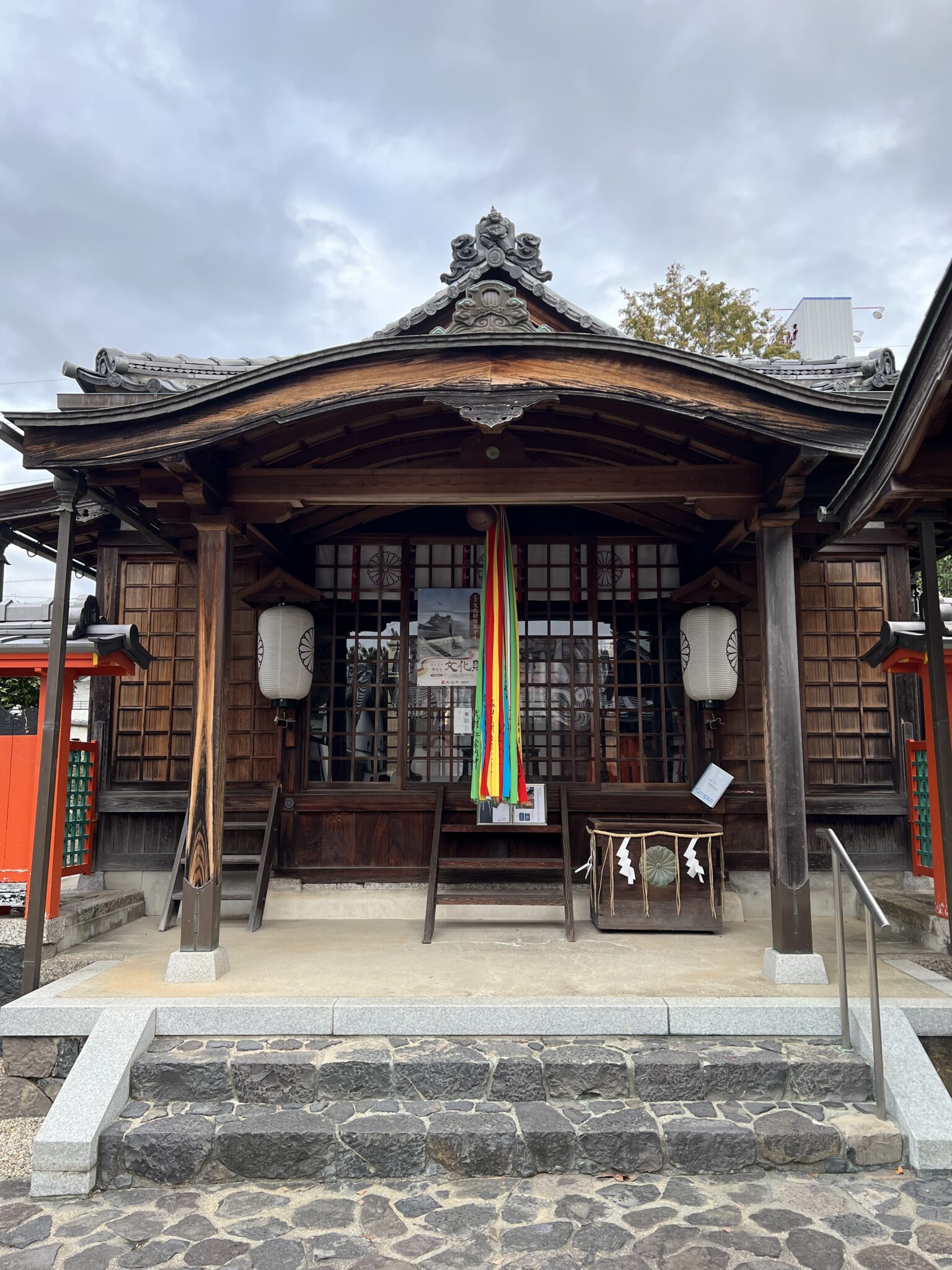
早良親王の墓
早良親王の墓は一旦淡路島に作られたが、その死後平安京への祟りは収まらず、死後15年の延暦19年(800年)に「崇道天皇」と諡号を与え墓守を置くが、それでも祟りがやまないので、延暦24年(805年)に大和の国に移葬し、崇道天皇 八嶋稜を作って祀られた。
東大寺二月堂の修二会のご神名帳の読み上げでは、最後の怨霊十一柱のトップに「八嶋の御霊」としてその名が呼ばれる。
縁起
この崇道天皇社は、桓武天皇の死後、平城天皇となった安殿皇太子によって806年に創建された。この時に平城天皇が全国国分寺に春と秋に七日間金剛般若経を読むように、と命じられたことが今のお彼岸の始まりとなっている。
境内
紀寺の信号を西に入るとすぐ左手に「祟道天皇社」と彫られた大きな石碑と赤い鳥居が見え、石畳の参道がずっと奥まで続いている。本殿は春日造、檜皮葺の重要文化財。春日若宮社の式年造替に伴って移築された旧殿で、元和9年(1623年)11月4日の棟札がある。
訪れる人も少なく表通りからも奥まってとても静かな空間だ。隅々まで清掃が行き届いた境内に早良親王を偲び供養する気持ちが溢れているように思う。
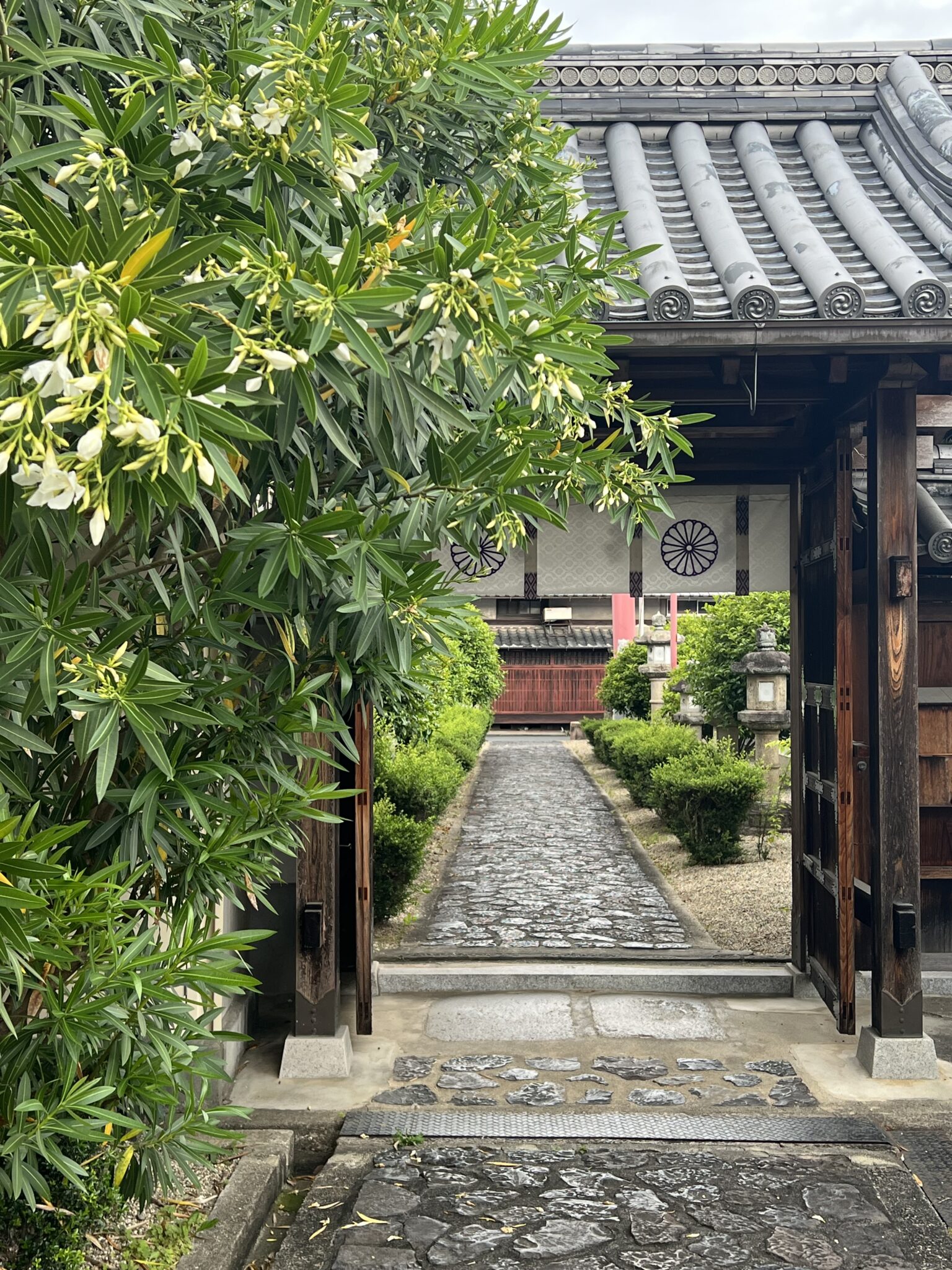
御神徳
疫病災厄退散、健康長寿、家運隆盛、家業繁栄、円満和楽
季節や月替わりの御朱印がとても可愛らしいので通常は御朱印を集めないのですが、1年間こちらのものを集めようと思っています。
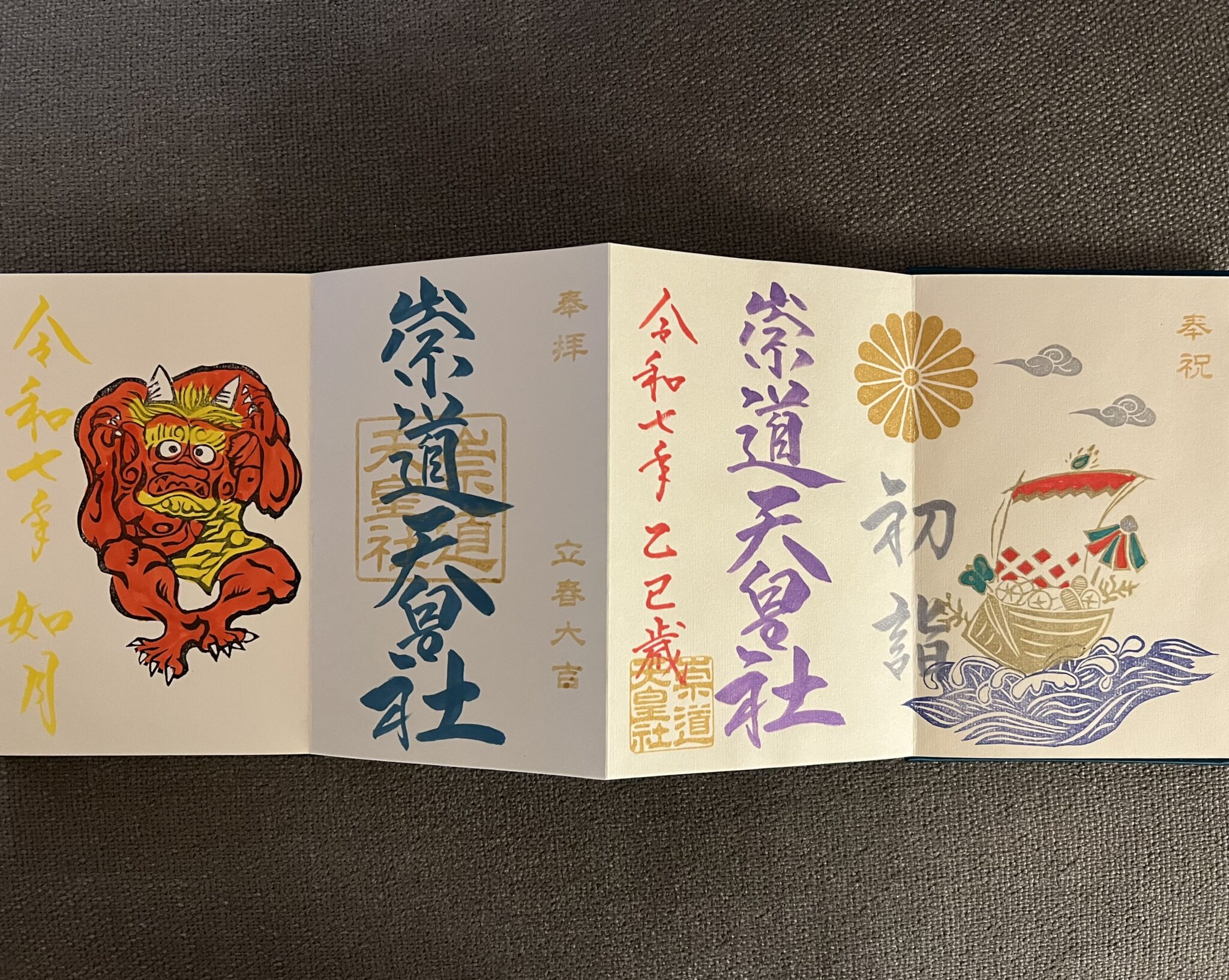
アクセス
JR奈良駅、近鉄奈良駅の両方から市内循環バス外回りで「紀寺町」下車1分。少し距離はあるが近鉄奈良駅から御霊神社や元興寺などを訪ねながら歩いてくるのも良いかもしれない。
奈良県奈良市西紀寺町40番地
Tel/Fax: 0742-23-3416

